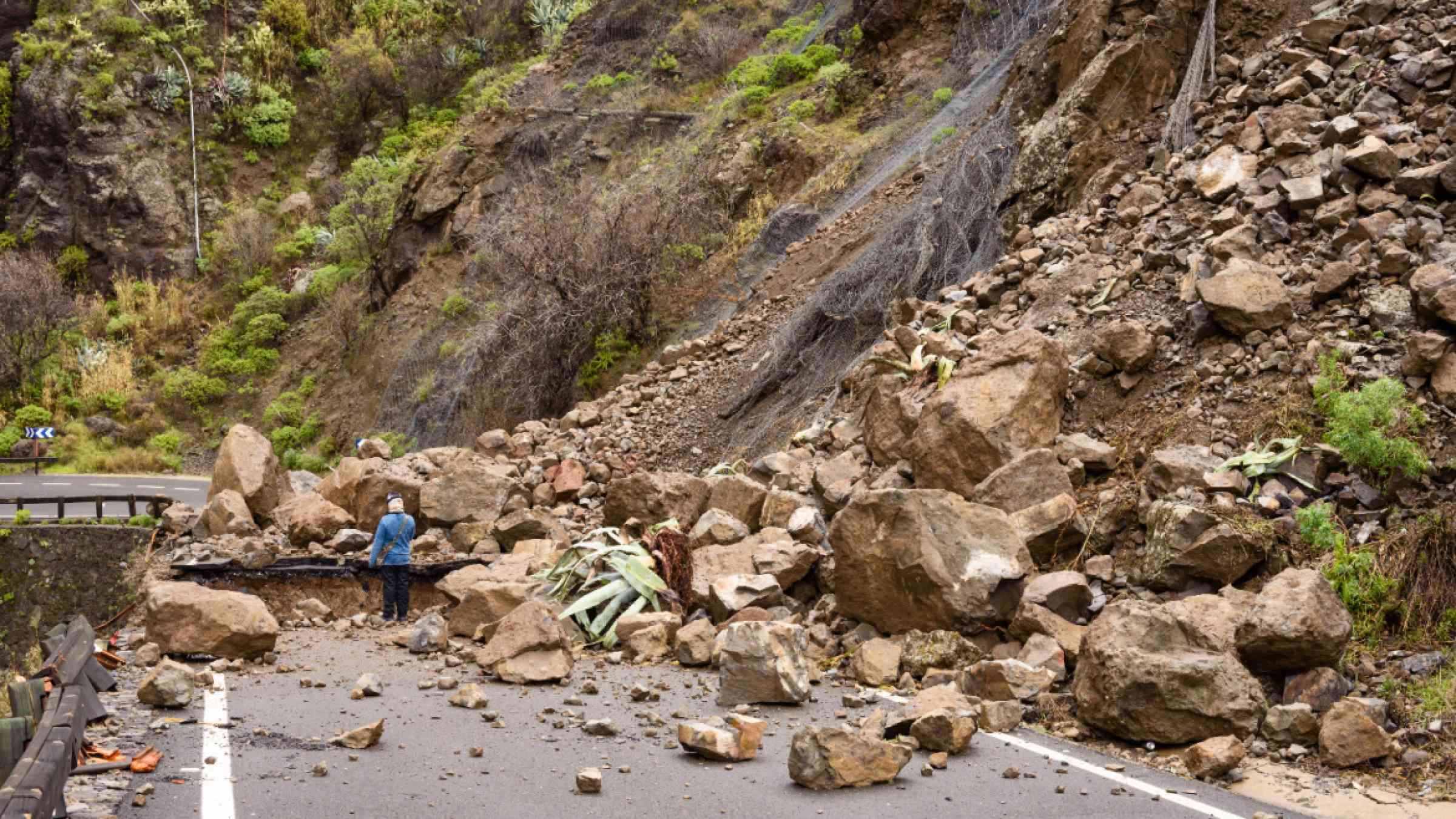Rock boccia on the slope

"Oh, oh, it's broken," says Joël Borner and looks after his boulder, down into the Hauptertälli. The SLF rockfall expert has launched a large, red-orange concrete block down the 30-degree slope from his launch site near the Weissfluhjoch near Davos, on command: "We launch in three, two, one, launch." On its way down, the block then hit a rock - and split in two with a loud bang.
Borner wants to find out how stones and boulders fall on rough ground such as the slope debris here, how they move, how they are deflected by obstacles: "Every stone starts somewhere, I want to know how far it travels and how fast it goes." His findings will primarily be incorporated into his computer model, which he uses to simulate such rock and boulder falls. The results can be used to create hazard indication maps of the Swiss mountain regions for municipalities and cantons, among other things.
The experiments are not without danger. After all, the hiking trail from the Strela Pass to the Weissfluhjoch runs within the slope. People are out and about here, on foot and on mountain bikes. Borner therefore needs a group of volunteers from the SLF for each test day, who, among other things, help to close this path at short notice before each stone is thrown.
The blocks weigh between 45 and 200 kilograms and are roughly the same size as the natural scree on the slope. Their fall path is seemingly random. "They can be thrown high into the air, change direction abruptly or lose all energy in a single impact, which is exactly what interests us in this phase," says Borner, explaining the reason for the upper limit. In order to obtain comparable results, he had 30 steel-reinforced concrete blocks of different shapes and sizes cast specifically to analyze different gravitational processes.
Rock by rock
Borner and his helpers insert long metal cylinders into pre-drilled holes and wedge them in place. "You mustn't tighten them too much, otherwise parts will break out," warns the researcher. There is a sensor in each of these cylinders. A research colleague records exactly which sensor goes into which cylinder and which stone. Borner uses them to measure various data, including acceleration and rotational speed.
A good week before the first experiments, he had the stones transported to the Weissfluhjoch by cable car. Eight trips were necessary for this. Then he was on site twice more with large shopping bags full of accessories to select a suitable location for a camera on the opposite slope, in the middle of the rock, to color-code the stones and mark reference points in the terrain. The camera records the experiments, concrete rock by concrete rock.
Aerial support
The SLF has already investigated rock and boulderfall in a similar way before, at the Flüela Pass near Davos on soft ground and in the forest near Schiers in Prättigau. "So far, we haven't looked at the interaction with slope and block debris in such detail," says Borner. The computer models did not work so well there because they did not adequately take into account the roughness of the ground. The researcher wants to change this and provide the necessary data. "This is because scree is usually already present, especially where rockfall is expected," he explains.
Every now and then there is a break in the tests. Then the hiking trail is clear and SLF remote sensing specialist Andi Stoffel uses a drone to survey the area where the rocks are located. From above, it looks as if someone has been playing a game of boccia on the slope, admittedly with large balls.
Wheels are the most dangerous
The helpers then use GPS to determine the exact end points where the stones have landed before the team collects the sensors. Borner reads out the data on site, then the sensors are placed in the next batch of stone blocks. He is most interested in the wheel-shaped ones: "If there is nothing in their way, they are by far the fastest and most dangerous. But if they hit an obstacle, they can tip onto their flat side and even come to rest on a steep slope. So their range varies enormously."
Next year, the researcher will set off again towards Weissfluhjoch. Then the concrete blocks will be back at their starting point. And then he will give his commands over the radio again: "We'll launch in three, two, one, launch."